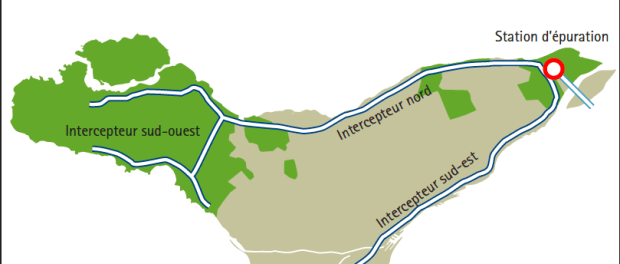#FlushGate Finished Fast
Thank you world community for kicking up such a fuss.
Montreal’s week-long raw-sewage dump into the St. Lawrence ended Saturday afternoon at 4:44 p.m., three days ahead of schedule. Instead of sending 8 billion litres of raw sewage into the river, only 4.9 billion litres was sent. I can only think that the rapid pace of these repairs is due to the world’s glaring eye.
The cause of this rather unappealing civic event was a series of repairs to the Sud-Est major interceptor. Montreal’s three interceptor are gigantic tunnels located about 33 meters below ground and between 1.8 and 5.4 m in diameter, that collects effluent (that’s waste water, folks) from other sewer lines and sends it to the treatment plant Jean-R.-Marcotte in Rivières des Prairies. According to the Montreal City website, the treatment plant deals with 2.5 million meters cubed of water per day when it is dry, and 8 million meters cubed when it rains. Many burroughs on the south side of the island had their sewage directly sent into the river through discharge points, rather than collecting in the main inceptor. Ville Marie, Westmount, Lachine, Lasalle, Verdun, Sud Ouest, TMR, Montreal West, Cote St. Luc, Mercier-Hochelaga-Maisonneuve had 100% of their sewer waste sent into the river. Other burroughs were affected as well.
According to the Montreal city website, the major interceptor was deteriorating. 14 arches in the southeast interceptor needed to be replaced. Other work included an inspection of sedimentation and removal of a defective valve, cleaning of numerous cells, change and repair to temperature sensors,
The great dump isn’t entirely over. A snow dump, called Riverside, needs repairs. So from this one pipe, raw sewage will continue to flow into the St. Lawrence for 10 days. It’s not ideal, but it’s better than what was originally predicted. Those living in Habitat 67 and the King Edward secotr should avoid contact with water and try to use biologically safe cleaning products during the repairs.
It’s also ideal not to flush the following items during the work: cigarettes, condoms, Q-tips, diapers, medicine, paper, tampons, dental floss, cooking fat/oil, and wet-wipes.
The overall goal, so claims the city website, is to have 99.99% of our waste water treated and disinfected by ozonation by 2018. The city is also planning to build five tanks for sewage overflows by 2020.
If the whole dumping of sewage into the St. Lawrence seemed unappealing, keep in mind that this was done until 1980. How times have changed!









